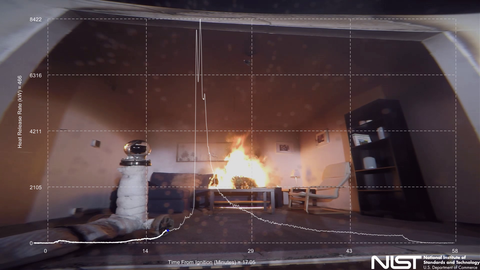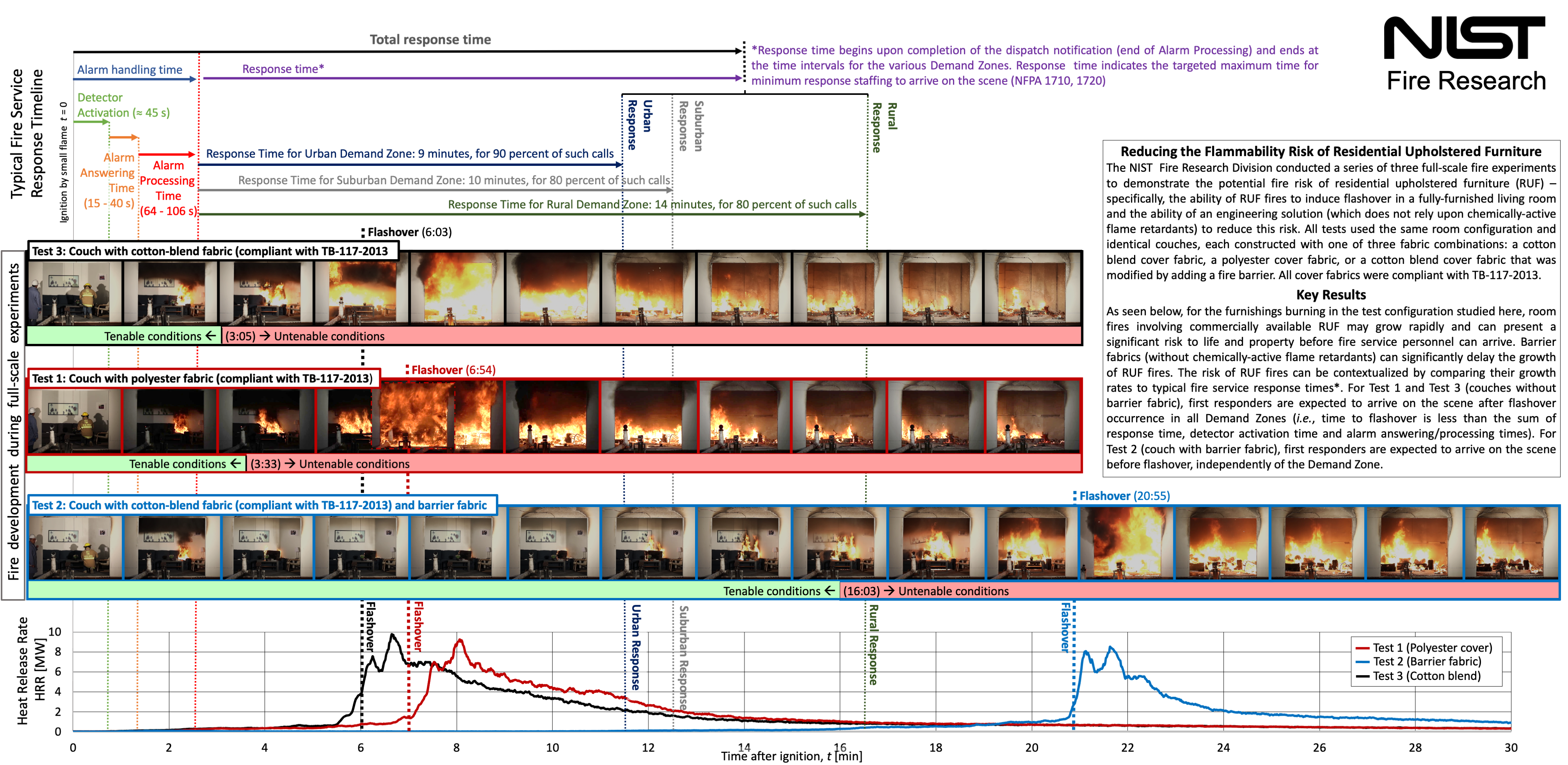Full-Scale Experiments to Demonstrate Flammability Risk of Residential Upholstered Furniture and Mitigation Using Barrier Fabric

This study looks at fire growth in a furnished compartment intended to mimic a living room where a couch, either with or without a barrier fabric, served as the primary fuel load. The experiments were designed to quantify the effect of barrier fabrics on the fire hazard (e.g., tenability conditions, heat release rate, time to flashover and smoke generation) of residential upholstered furniture (RUF) ignited by a flaming-ignition source and to validate the failure mechanisms of barrier fabrics previously observed in chair mock-up experiments.
Three commercially available couches compliant with California Technical Bulletin TB-117 were procured. The couches were identical except for the type of cover fabric: two couches used a cotton blend cover and one used a thermoplastic polyester cover. One of the two couches with the cotton blend cover fabric was modified by adding a barrier fabric as a liner between the cover fabric and the couch padding material. The barrier contained only intrinsically fire-resistant fibers without additional, chemically active fire retardants. Three fire tests, one per couch type, were conducted. A throw pillow on the arm of the couch, ignited with a propane flame, acted as an ignition source. Measurements included heat release rate, gas species (O2,CO, CO2), video, heat flux and temperature.
DATA
Spreadsheets containing the data from the experiments can be downloaded from the links provided below. Information about the instrumentation layout including sensor types and uncertainties can be found in the test report.
- Test 1 data: Polyester cover fabric (Microsoft Excel file)
- Test 2 data: Cotton blend cover fabric with barrier fabric (Microsoft Excel file)
- Test 3 data: Cotton blend cover fabric (Microsoft Excel file)
Additional data and video related to the Heat Release Rate measurement can be found in the NIST Fire Calorimetry Database (FCD).
The timeline below provides a graphical overview of the three compartment fire experiments placed within the context of typical fire department response times in urban, suburban and rural area of the United States. The graphic suggests that first responders will not be able to intervene before flashover when a couch without barrier fabric is involved in the compartment fire (Test 1 and Test 3) even in urban areas; however, first responders will most likely be able to intervene and prevent flashover when a barrier fabric is adopted in the couch (Test 2) in urban, suburban, and rural areas. Flashover prevention is critical because it can stop fire spread to adjacent rooms and buildings, where the majority of fire deaths occur.

360° Video Gallery (Click and Drag Cursor in Video to Change Orientation)
OTHER VIDEOS
RELATED PUBLICATIONS
- M. Zammarano; M.S. Hoehler; J.R. Shields; A.L. Thompson; I. Kim; I.T. Leventon; M.F. Bundy Full-Scale Experiments to Demonstrate Flammability Risk of Residential Upholstered Furniture and Mitigation Using Barrier Fabric, Technical Note (NIST TN)-2129, 2020, pp 66.
Contacts
-
(301) 975-5244

